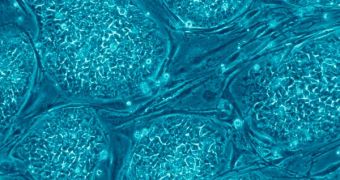Stem cells are known among health experts for their almost limitless healing potential, but their efficacy is highly dependent on whether they can reach their destined location or not. In some forms of treatment, a large part of the cells gets lost on the way, which reduces the health benefits of the overall treatment. Now, experts have devised a new method for guiding them, using nanoscale magnets, for an optimum dispersion and effect. Details of the method appear in the latest issue of The Journal of the American College of Cardiology: Cardiovascular Interventions, ScienceDaily reports.
Scientists at University College London (UCL) were behind the new achievement, which allowed them to successfully guide a batch of potent stem cells to the site of a cardiovascular injury. Using the nanomagnets increased the performance of the stem cells themselves, which acted a lot more efficiently on the damage, and reconditioned it. For the experiments, the scientists used endothelial progenitor cells, which are especially suited for employment in vascular healing processes.
These cell batches were tagged with tiny, iron-containing clinical agents, which meant that they could now be manipulated using a magnetic field. The control was exercised from the outside, with an external magnet, as the researchers essentially pulled the stem cells through the body to their desired location. When analyzing the test rats, the UCL team determined that the number of stem cells that actually reached the site of the damage showed a five-fold increase, as opposed to not using magnets. In special, in-vitro conditions, a six-fold increase was observed.
“This research tackles one of the most critical challenges in the biomedical sciences today: ensuring the effective delivery and retention of cellular therapies to specific targets within the body. Cell therapies could greatly benefit from nano-magnetic techniques which concentrate cells where they are needed most. The nano-magnets not only assist with the targeting, but with the aid of MRI also allow us to observe how the cells behave once they're injected,” the lead researcher of the new study, UCL Center for Advanced Biomedical Imaging expert Panagiotis Kyrtatos, explains.
“Because the material we used in this method is already FDA approved we could see this technology being applied in human clinical trials within 3-5 years. It's feasible that heart attacks and other vascular injuries could eventually be treated using regular injections of magnetized stem cells. The technology could be adapted to localize cells in other organs and provide a useful tool for the systemic injection of all manner of cell therapies. And it's not just limited to cells – by focusing tagged antibodies or viruses using this method, cancerous tumors could be much more specifically targeted,” CABI scientist Dr. Mark Lythgoe, also the senior author of the paper, adds.

 14 DAY TRIAL //
14 DAY TRIAL //